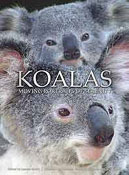First toxic car report released

Tuesday the Ecology Center released its consumer guide to toxic chemicals in cars at www.healthycar.org. Over 200 of the most popular 2006- and 2007-model vehicles in the U.S. were tested for chemicals that off-gas or emit gas such as the steering wheel, dashboard, armrests and seats. These chemicals contribute to the "new car smell" we all relish and may, at the same time, pose a variety of acute and long-term health concerns. The average American spends more than 1.5 hours in a car every day consequently toxic chemical exposure inside vehicles is a major source of indoor air pollution.
The good news is that some cars are less toxic than others. Toxic chemicals in fact, are not required to make auto parts, and some manufacturers have begun to phase them out. Chemicals of primary concern include: bromine (associated with brominated flame retardants); chlorine (indicating the presence of polyvinyl chloride, or PVC and plasticizers); lead; and heavy metals. Such chemicals have been linked to a wide range of health problems such as allergies, birth defects, impaired learning, liver toxicity, and cancer.
What follows is a list of the 10 best and 10 worst cars tested. GM's Chevy brand had the distinction of both best and worst pick, with the Cobalt scoring first and Silverado truck scoring last.
 Brands that fared well included Volvo and Honda/Acura, both with two models in the top ten. Kia/Hyundai joined Chevy with three entries in the worst ten.
Brands that fared well included Volvo and Honda/Acura, both with two models in the top ten. Kia/Hyundai joined Chevy with three entries in the worst ten."Our findings show that it is not necessary to use toxic chemicals when making indoor auto parts," said Jeff Gearhart, the Ecology Center's Clean Car Campaign Director. "There is no excuse for manufacturers not to replace these hazardous chemicals with safe alternatives immediately."
While there are numerous substances in vehicles that can lead to health and environmental problems, HealthyCar.org selected those with known toxicity, persistence, and tendency to build up in people and the environment. These chemicals included:
Bromine: Associated with the use of brominated flame retardants, BFRs are added to plastics in order to impart fire resistance, but they are released into the environment over the life of the vehicle. Heat and UV-ray exposure in cars can accelerate the breakdown of these chemicals and possibly increase their toxicity. Some BFRs have been associated with thyroid problems, learning and memory impairment, decreased fertility, behavioral changes, and other health problems.
Chlorine: Associated with the use of polyvinyl chloride, PVC is a widely used type of plastic that is of concern to the environment and public health during all phases of its life cycle. PVC contains chemicals called phthalates, some of which have been associated with decreased fertility, pre-term deliveries, and damage to the liver, testes, thyroid, ovaries, kidneys, and blood. There is also evidence that phthalates can pass from mothers to babies through the placenta and through breast milk.
Lead: Lead is sometimes used as an additive in automotive plastics. Exposure can lead to a number of potential health effects including brain damage, and problems with the kidneys, blood, nerves, and reproductive system. It can also cause learning and behavioral problems.
Other: Other chemicals tested as part of healthycar.org include antimony, arsenic, chromium, cobalt, copper, mercury, nickel and tin. The substances in this category are allergens, carcinogens, or cause other adverse health impacts depending on the concentrations and exposure levels.
The same chemicals that cause human health issues also cause problems for the environment. AS+s vehicles are discarded, the plastic and other non-metallic parts are shredded. Asigned to landfills or burned in incinerators, these discarded materials leach harmful chemicals and contaminates into our soil, waterand atmosphere.
Greener News Room
Labels: Environment



8:36 AM









<< Home